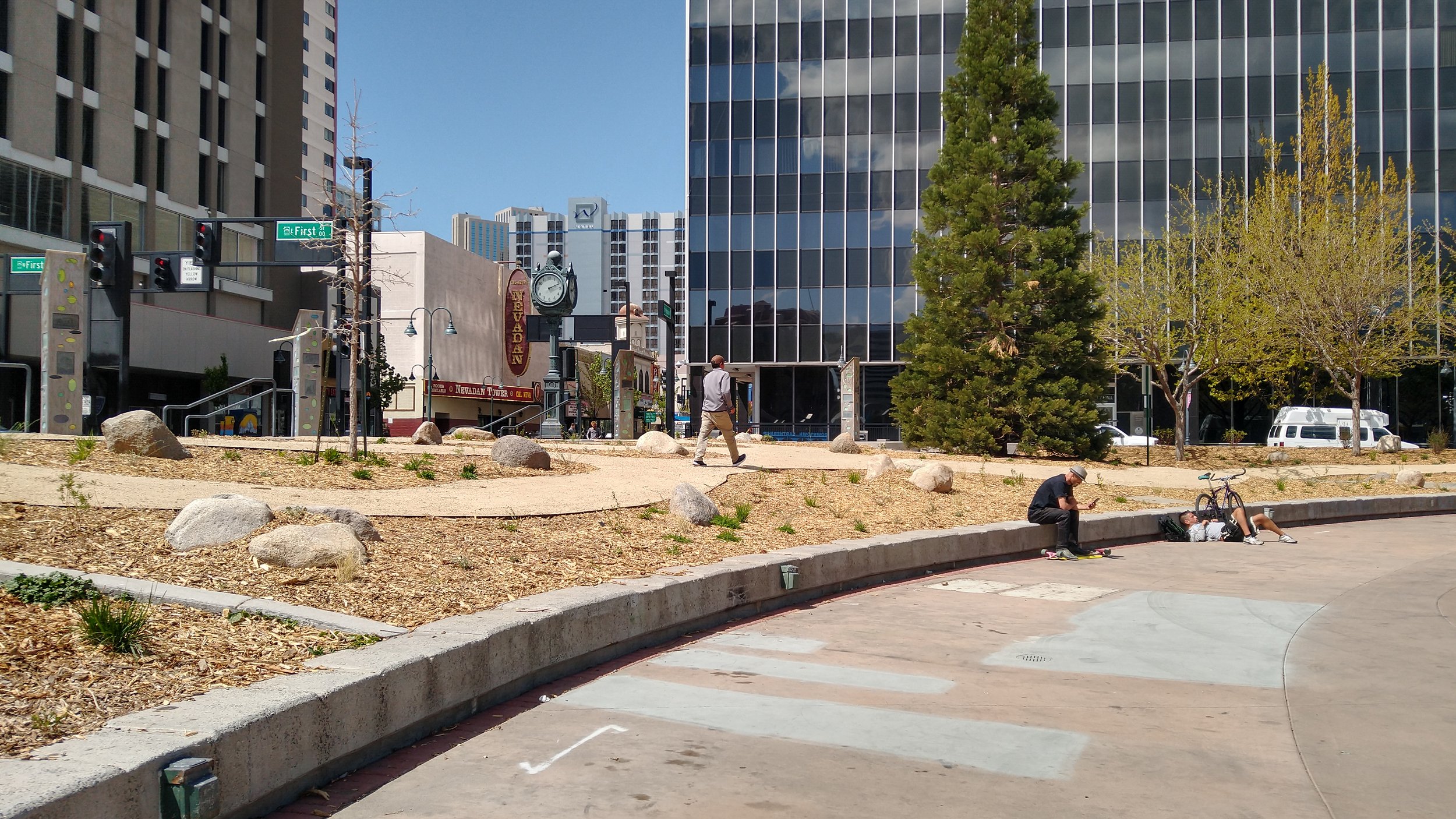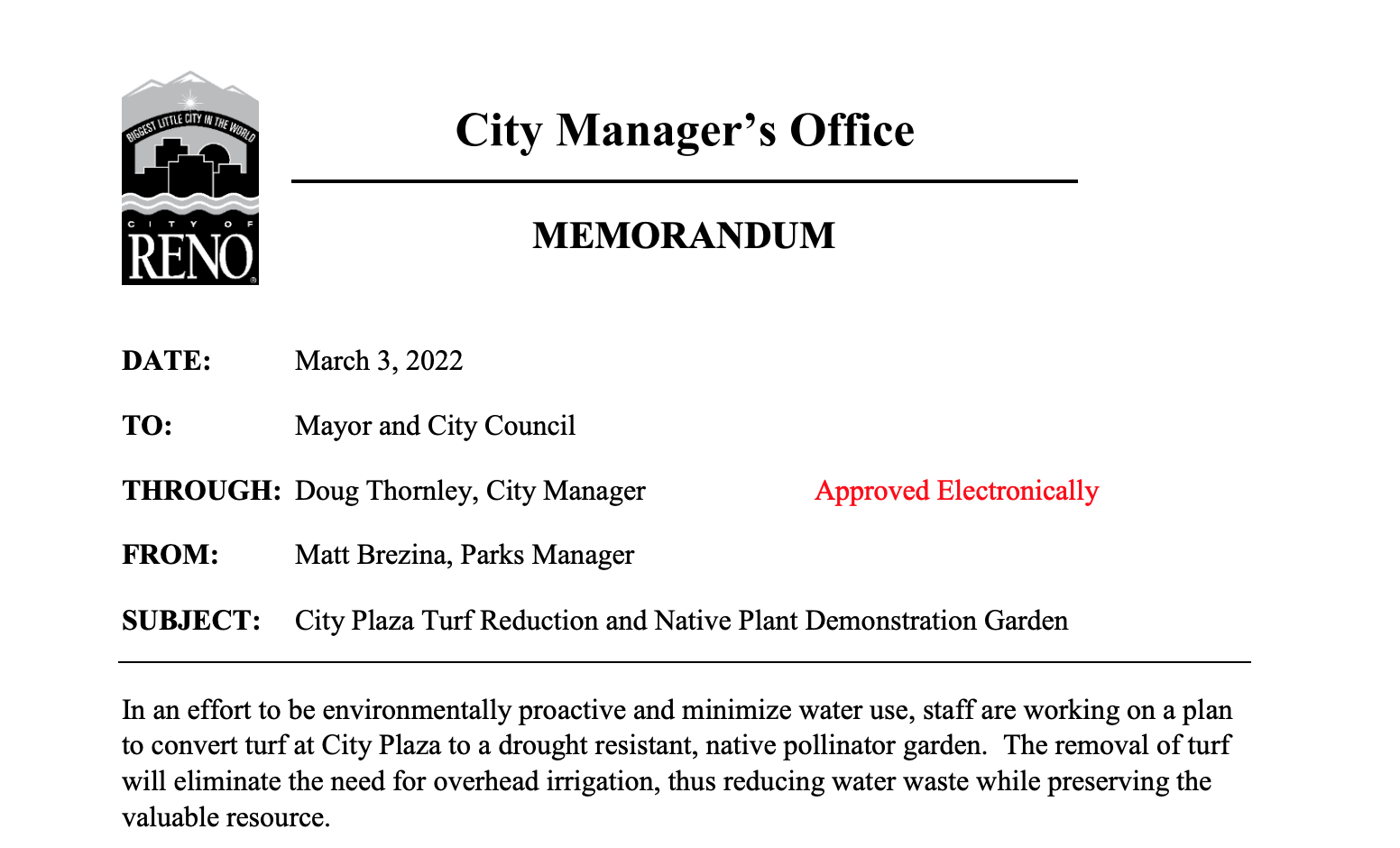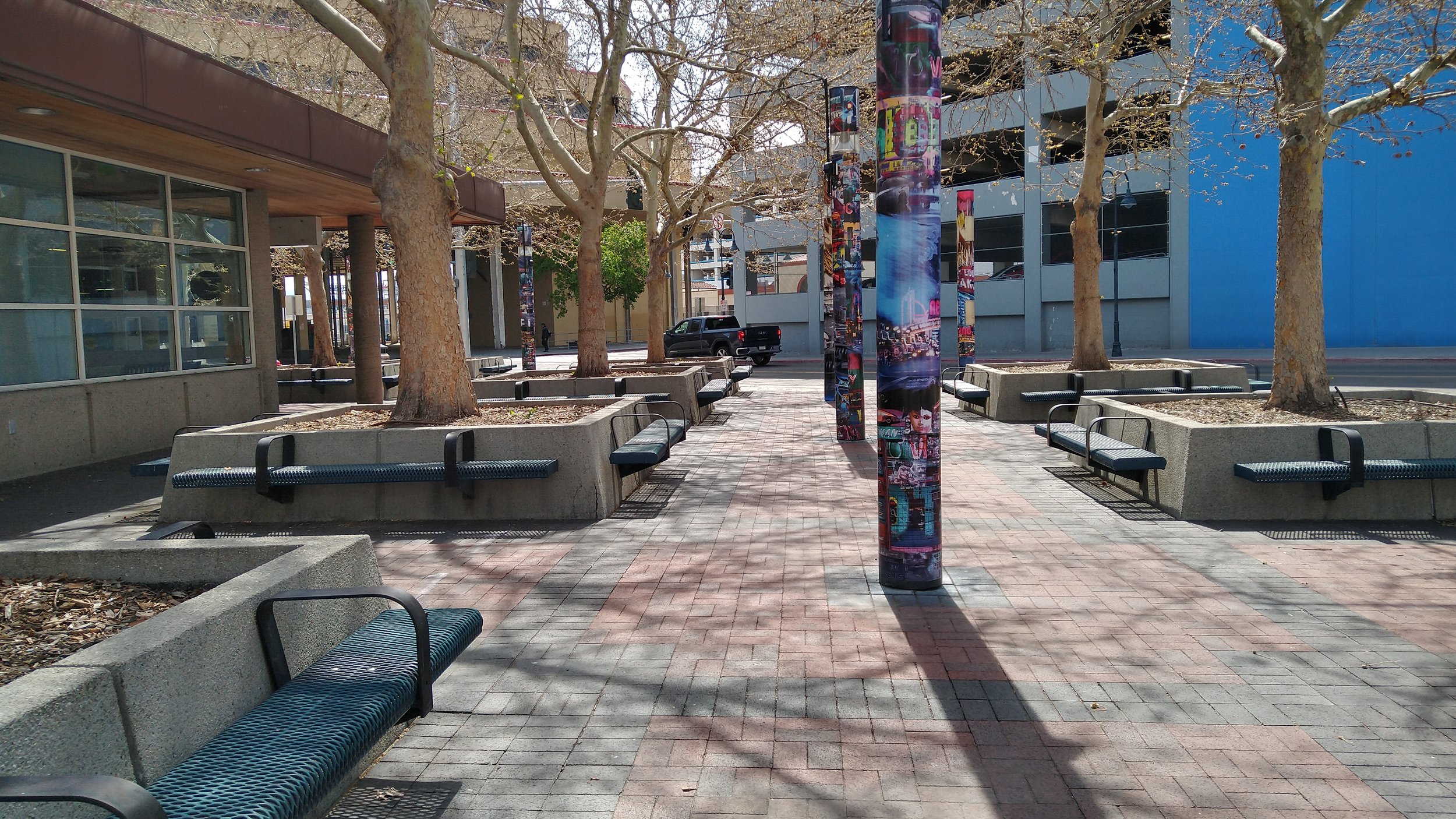Hostile architecture is what it sounds like, aspects of usable design that are intended to be aggressive, and keep people from lingering. Bars on benches are examples.
The city said it’s trying to save on water and use native drought-resistant plants, sand and wood chips at its signature Believe Plaza where green, comfortable grass was recently ripped out, so is this “hard xeriscaping” also a part of this trend?
“I look at it and all I can say is cute,” says Dustyn Cook, 30, a Reno native who frequents the plaza. He was there midday with his tote bag, sitting with friends, passing time. “But they aren’t fooling anyone this is obviously to target the homeless. They’re gonna move them out like they're some sort of pest.”
“Reno has a problem with homelessness that they’re not addressing,” said Leroy Cormier, 63, a friend of Cook. Cormier was in a wheelchair with a sweater tied on the back. Inside his boot, he had a boar brush. “This place used to be a place where everyone came and rested and the community was here.”
Cook and Cormier expressed a desire for more communication from the city. The abrupt change caught them by surprise. Both shared sentiments that changes like those in the plaza would simply move the homeless population to a different part of the city, and not address the root causes.
“The main purpose of all of this is to keep people in one place,” said Cormier alluding to efforts to push all the unhoused into the Cares Campus compound. “‘Cause Reno has to bounce back and make money.”
Other areas in Reno have also undergone construction which seems to prevent loitering. The bus station on 4th street has bars on its benches now and spikes on the edge of its planters. Reno Ambassadors also have a strong presence downtown. Their Segways and bright blue jackets are visible around every corner. They are often seen speaking to people who appear to be unhoused.
Several unhoused people we spoke to recently on a cold May day say the ambassadors also often make them feel unwelcome.
The Downtown Reno Partnership initiative which employs them says on its website: “They interact with residents, visitors and homeless to change downtown for the better.”
The DRP states as its “core purpose” making “downtown Reno a safer, cleaner, friendlier district for residents and visitors. The Downtown Reno Partnership is a [sic] entity funded by downtown-area property assessments and contributions. Those funds pay for operations, street maintenance administered by Reno Public Works, extra downtown Reno Police officers, Streetplus-administered Ambassadors, marketing and economic development.”





